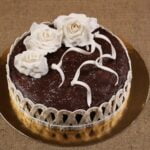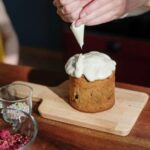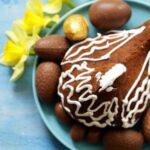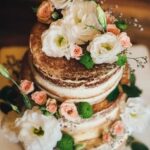Creating your own edible sugar decorations for cakes can add a touch of elegance and personalization to your baked creations. From simple embellishments to intricate designs, these decorations have the power to elevate the overall appearance of any cake. In this article, we will guide you on how to make edible sugar decorations for cakes, providing you with the tools and techniques needed to unleash your creativity in the world of cake decorating.
When it comes to cake making, presentation is key. Edible sugar decorations not only enhance the visual appeal of your cakes but also showcase your skills as a baker. Whether you’re a beginner looking to add a touch of flair to your desserts or an experienced baker aiming for more intricate designs, mastering the art of creating sugar decorations can take your baking game to the next level.
With simple ingredients and a few essential tools, you can create stunning edible sugar decorations that are sure to impress. From fondant and gum paste flowers to royal icing details and isomalt sculptures, there are endless possibilities when it comes to decorating cakes.
In the following sections, we will explore different types of edible sugar decorations, provide you with a step-by-step guide on how to create them, and share advanced techniques for those looking to take their cake decorating skills up a notch. Get ready to unleash your creativity and wow your friends and family with beautifully decorated cakes.
Tools and Materials Needed
Tools Needed
To create beautiful edible sugar decorations for cakes, you will need some essential tools to help you along the way. Some of the necessary tools include a rolling pin, fondant smoother, sharp knife or pizza cutter, various shaping tools such as cutters and molds, a dusting pouch filled with cornstarch or powdered sugar to prevent sticking, and a paintbrush for adding details with food coloring or edible paints.
Materials Required
In addition to the tools mentioned above, you will also need specific ingredients to make different types of edible sugar decorations. The basic ingredients include fondant or gum paste for creating intricate shapes and figures, royal icing for delicate piping work, isomalt for realistic-looking sugar glass elements, food coloring in gel or powder form for tinting your decorations, and edible glue to adhere different pieces together.
Bonus Tips
When selecting tools and materials for making edible sugar decorations, it’s essential to invest in quality products that will yield professional results. Make sure your fondant is pliable and not dried out, your food colors are vibrant and concentrated for better color payoff, and your shaping tools are sturdy enough to create precise designs.
Additionally, having a clean workspace free from any dust or debris will ensure that your sugar decorations turn out as intended. By utilizing the right tools and materials, you can elevate the appearance of your cakes with stunning edible embellishments that will impress any guest.
Types of Edible Sugar Decorations
When it comes to making edible sugar decorations for cakes, there are various types of mediums that can be used to create stunning embellishments. Each type of decoration offers unique features and advantages, allowing for endless creativity in cake decorating. Here are some of the popular options you can explore:
- Fondant: Fondant is a pliable sugar paste that can be rolled out and shaped into various designs. It is often used to cover cakes and create smooth surfaces for decoration. Fondant can also be molded into intricate shapes and figures, making it a versatile choice for decorating.
- Gum Paste: Gum paste is similar to fondant but dries harder and faster, making it ideal for creating delicate flowers, leaves, and other detailed decorations. It can be rolled thin and shaped easily, allowing for intricate designs that add a touch of elegance to any cake.
- Royal Icing: Royal icing is made from egg whites or meringue powder mixed with powdered sugar, creating a smooth and glossy finish when dried. It is often used for piping intricate designs, creating lace patterns, and adding texture to cakes. Royal icing dries quickly and hard, making it great for detailed work.
In addition to these classic options, another popular choice for sugar decorations is Isomalt Isomalt is a type of sugar substitute that can be melted down and poured into molds to create clear and shiny decorations such as jewels or glass-like shards. It has a lower melting point than traditional sugar, making it easier to work with when crafting intricate designs.
Overall, each type of edible sugar decoration offers its own set of possibilities and techniques, allowing bakers to experiment with different mediums to achieve their desired look on cakes. Whether you prefer the pliability of fondant, the delicate nature of gum paste, the versatility of royal icing, or the clarity of Isomalt, there’s no limit to how you can elevate your cake decorating skills with these options.
Step-by-Step Guide
Shaping Sugar Decorations
To start making your own edible sugar decorations for cakes, you will need to first decide on the shape and design you want to create. Whether it’s simple shapes like hearts or stars, or more intricate designs like leaves or bows, having a clear idea will guide your process. Begin by kneading your fondant or gum paste until it’s pliable and easy to work with.
Use rolling pins, cookie cutters, and shaping tools to create the desired shapes. Don’t forget to dust your work surface with powdered sugar to prevent sticking.
Coloring Techniques
Adding color to your sugar decorations can make them stand out and complement the overall theme of your cake. Gel food colors are recommended as they are concentrated and won’t alter the consistency of your fondant or gum paste. Start by adding tiny amounts of color and knead well until you achieve the desired shade. For more intricate designs that require multiple colors, consider using paintbrushes to apply different colors or layering colored pieces together.
Drying Process
Once you have shaped and colored your sugar decorations, it’s essential to let them dry properly before placing them on your cake. Lay them out on a flat surface covered with parchment paper to prevent sticking. Depending on the size and thickness of your decorations, drying times may vary from a few hours to overnight.
To speed up the process, you can place them in front of a fan or in a dehydrator set at a low temperature. Remember that proper drying will ensure that your decorations hold their shape and don’t melt when placed on top of buttercream or fondant-covered cakes.
By following these step-by-step instructions on how to make edible sugar decorations for cakes, you can add a personal touch and creative flair to your baked creations. Experiment with different shapes, colors, and designs to customize your cakes for any occasion.
Whether you’re a beginner or have some experience in cake decorating, making your own sugar decorations can be a fun and rewarding process that will impress both yourself and others who get to enjoy your delicious creations.
Advanced Techniques
Creating advanced edible sugar decorations such as sugar flowers, intricate designs, and 3D decorations can truly take your cake decorating skills to the next level. These delicate and detailed decorations can add a touch of elegance and sophistication to any cake or dessert. While these techniques may seem intimidating at first, with practice and patience, you can master the art of making stunning edible sugar creations.
One popular advanced technique in cake decorating is crafting sugar flowers. These delicate blooms can be made from gum paste or fondant and can range from simple roses to intricate orchids. With the right tools and a steady hand, you can create lifelike floral arrangements that will impress your friends and family. By learning how to manipulate the sugar paste, color the petals realistically, and assemble the flowers with care, you can elevate your cakes to a professional level.
In addition to sugar flowers, mastering intricate designs like lace patterns, filigree work, or geometric shapes can add a unique flair to your cakes. Using royal icing or isomalt for these intricate decorations allows for more precision and detail in your designs.
By practicing piping techniques and experimenting with different tip sizes, you can create beautiful patterns that will catch the eye of anyone who sees your cake. Don’t be afraid to get creative and push your boundaries when it comes to creating intricate edible sugar decorations for cakes.
| Sugar Decorations | Benefits |
|---|---|
| Sugar Flowers | Adds elegance and sophistication |
| Intricate Designs | Unique flair and attention-grabbing details |
Troubleshooting Tips
When creating edible sugar decorations for cakes, you may encounter some common issues that can potentially affect the final result of your masterpiece. One of the most frequent problems is air bubbles forming in the fondant or gum paste while shaping and molding. To prevent this, make sure to knead the dough thoroughly before rolling it out. If air bubbles still appear, use a pin to gently prick them and smooth out the surface.
Another issue that bakers often face is color bleeding in royal icing decorations when placed on a cake with moist frosting. To avoid this, allow the royal icing decorations to dry completely before placing them on the cake. You can also try adding a thin layer of shortening on the back of the decoration before attaching it to create a barrier between the icing and moisture.
Additionally, sometimes edible sugar decorations may become too fragile and break easily during handling. This could be due to not allowing enough time for them to dry properly. To remedy this, ensure that you let your sugar decorations dry in a cool, dry place for an adequate amount of time before handling them. This will help them harden and become sturdier for application on cakes without breaking apart.
| Common Issue | Solution |
|---|---|
| Air bubbles in fondant or gum paste | Knead thoroughly before rolling out; gently prick bubbles with pin |
| Color bleeding in royal icing | Allow decorations to fully dry before placing on cake; use shortening as a barrier |
| Fragile sugar decorations | Ensure proper drying time in cool, dry place before handling |
Storage and Shelf Life
When it comes to creating beautiful edible sugar decorations for cakes, one important aspect to consider is how to properly store and preserve these delicate pieces. By taking the right steps in storing your sugar decorations, you can ensure that they remain in top condition and ready to use whenever needed.
Here are some tips on how to store and preserve your edible sugar decorations for future use:
- Place in an Airtight Container: After creating your sugar decorations, make sure to place them in an airtight container. This will help prevent exposure to air and moisture, which can cause the decorations to soften or lose their shape.
- Keep Away from Heat and Sunlight: Store your sugar decorations in a cool, dry place away from direct sunlight and heat sources. Exposure to heat can cause the decorations to melt or warp, ruining their intricate designs.
- Use Silica Gel Packs: To absorb any excess moisture and prevent humidity from affecting your sugar decorations, consider adding silica gel packs to the container. These packs are commonly found in packaging for electronics or shoes.
By following these storage tips, you can prolong the shelf life of your edible sugar decorations and ensure that they are ready to use for your next baking project. With proper care and attention, you can enjoy using these decorative pieces time and time again.
Inspiration and Ideas
When it comes to decorating cakes, cupcakes, and other desserts, edible sugar decorations are a versatile and eye-catching option that can truly elevate the overall look of your creations. Whether you’re a beginner or a seasoned baker, learning how to make edible sugar decorations for cakes can add a special touch to any sweet treat. From simple designs to intricate details, the possibilities are endless when it comes to using sugar decorations in your baking projects.
One creative way to use edible sugar decorations is by incorporating them into themed cakes. For example, if you’re making a birthday cake for a sports enthusiast, you can create fondant soccer balls or gum paste basketball hoops to tie in with the theme.
For baby showers or weddings, delicate sugar flowers made from royal icing or isomalt can add a touch of elegance and sophistication to your dessert table. The key is to think outside the box and let your imagination run wild when designing custom sugar decorations for your treats.
In addition to cakes, edible sugar decorations can also be used on cupcakes and other desserts to make them stand out from the crowd. A simple swirl of royal icing on top of a cupcake can instantly transform it into a work of art, while 3D sugar butterflies or hearts can add a whimsical touch to cookies or pastries.
By experimenting with different shapes, colors, and textures, you can create unique and visually stunning treats that will wow your family and friends. So don’t be afraid to get creative and explore the endless possibilities of using edible sugar decorations in your baking projects.
Conclusion
In conclusion, learning how to make edible sugar decorations for cakes can truly take your baking skills to the next level. By mastering the techniques and tips outlined in this article, you will be able to create stunning and unique decorations that will impress your friends and family. From simple shapes to intricate designs, the possibilities are endless when it comes to adding a personal touch to your confectionery creations.
Remember, the key to successfully making edible sugar decorations lies in practice and experimentation. Don’t be afraid to try new techniques, colors, and shapes. Each attempt is a learning opportunity that will only enhance your skills in cake decorating. Whether you are a beginner or an experienced baker, there is always room for growth and improvement in the art of creating edible sugar decorations.
So gather your tools and ingredients, unleash your creativity, and have fun with the process of making deliciously beautiful sugar decorations for your cakes. With dedication and patience, you will soon be able to master the art of sugar crafting and elevate the appearance of your desserts like never before. Happy decorating.
Frequently Asked Questions
How Do You Make Edible Sugar Decorations?
To make edible sugar decorations, you will need sugar, water, and a candy thermometer. Start by boiling the sugar and water until it reaches a specified temperature depending on the type of decoration you want.
Then pour the melted sugar onto a silicone mat or parchment paper to cool and harden. Once hardened, you can break the sugar into different shapes and designs to use as decorations on cakes or cupcakes.
How Do I Make Edible Images for Cakes?
Making edible images for cakes involves printing designs using edible ink on special frosting sheets made from potato starch or rice paper. You can either purchase these sheets pre-made or invest in an edible printer to create your own custom designs at home.
Simply print your image, let it dry for a few minutes, then carefully peel it off the backing sheet and place it onto your frosted cake. The image will blend seamlessly into the frosting for a professional-looking finish.
How Do You Melt Sugar for Cake Decorations?
Melting sugar for cake decorations requires minimal ingredients but careful attention to detail. Start by heating granulated sugar in a heavy-bottomed saucepan over medium heat until it melts completely and turns into a golden caramel color.
Be sure not to stir too often as this can cause the sugar to crystallize. Once melted, pour the caramelized sugar onto a silicone mat or greased baking sheet to cool slightly before shaping it into decorative elements like swirls or shards that can be used as cake decorations.

Welcome to my blog about home and family. This blog is a place where I will share my thoughts, ideas, and experiences related to these important topics. I am a stay-at-home mom with two young children. I hope you enjoy reading it! and may find some helpful tips and ideas that will make your home and family life even better!





